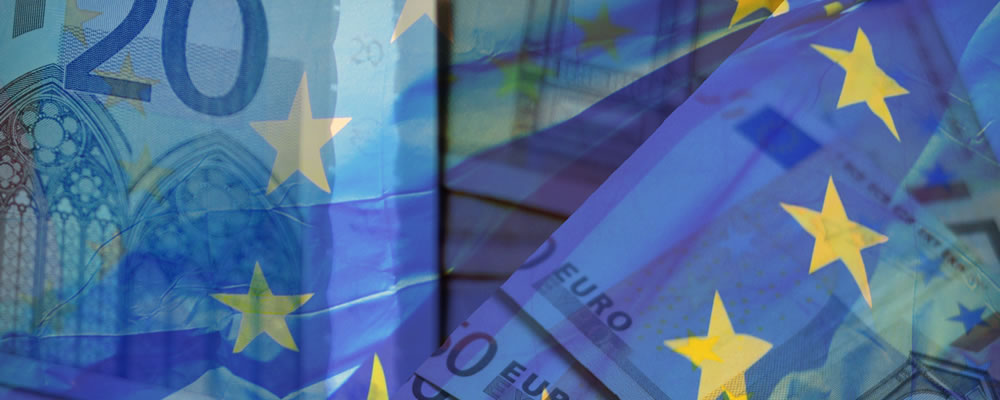- EUR GBP Exchange Rate Dips to 0.89 – ECB news leaves Euro weaker against Pound
- European Central Bank Leaves Policy Frozen – Draghi claims changes to QE were not discussed
- Update: UK Public Borrowing Results Fail to Inspire – Sterling sturdy despite poor results
- Forecast: Eurozone CPI in Focus Next Week – How was Eurozone economic activity in October?
EUR GBP Exchange Rate Ends Week Near Two-Week Low
Despite disappointing UK data publishing over the last two days, the Pound ended the week well up against the Euro as these stats were unable to inspire any Sterling bearishness.
Friday saw the publication of Britain’s September public sector net borrowing scores, which revealed a bigger-than-expected borrowing deficit figure of £10.118b. Markets had expected a lower £8.2b.
This disappointing score as well as low expectations for borrowing in the rest of the year failed to weigh much on Sterling demand however, as the Pound was able to hold its ground thanks to ongoing Euro weakness.
Thursday’s ECB news continued to weigh on the shared currency, and the Euro could continue this poor performance unless next week’s preliminary October Eurozone PMIs beat expectations.
If Eurozone economic activity fails to meet expectations instead, the Euro could plunge and the EUR GBP exchange rate could fall further from its multi-year highs in the coming week.
(Published 07:00 BST 21/10/2016)
This week’s EUR GBP exchange rate forecast sees the pair ending up lower than opening levels despite a brief Euro surge on Thursday, as Sterling’s Tuesday rally seems to have been the biggest event this week for the pair. Friday’s session is unlikely to cause much Euro or Pound movement.
EUR GBP briefly reached above the key level of 0.90 on Thursday in response to comments from European Central Bank (ECB) President Mario Draghi, but the pair ultimately continued to trend around half a penny below the week’s opening levels, in the region of 0.89.
Euro (EUR) Mixed on ECB President Draghi Comments
Modest Euro Pound exchange rate movements were recorded in the build up to and immediate aftermath of the European Central Bank interest rate decision.
Another ECB policy meeting has come and gone, resulting in another policy decision that will seem all too familiar to investors.
In its October meeting, the ECB left monetary policy on hold, stating as usual that its additional easing measures would remain in effect until the end date of March 2017, or beyond if necessary.
However, it was ECB President Mario Draghi’s comments in the following press conference that gave markets something to think about and get excited about.
Draghi stated that while December would be the meeting to watch for those hoping for changes in monetary policy, policymakers did not discuss extending quantitative easing at all in Thursday’s meeting. This caused the Euro to briefly soar across the board.
Towards the end of the press conference, Draghi revealed that the bank did not discuss tapering QE either, stating;
‘An abrupt end to bond purchases? I think it’s unlikely. …
My perception is that the ‘sudden stop’ isn’t present in anyone’s mind’
Despite economists not expecting such a potentially harmful move, some investors still had and as a result the Euro Pound (EUR GBP) exchange rate gave up gains. The Euro’s bullishness was also weighed down by statements from Draghi reasserting that low interest rates work.
The Euro hit a four-month-low against its rival the US Dollar (USD) following Draghi’s conference.
Pound (GBP) Exchange Rates Limp on Underwhelming Retail Sales Scores
Sterling slipped against most currency rivals on Thursday as the support it had gained from Tuesday’s new hopes of a strong Brexit trade deal already begun to fade.
The day’s British data did little to help the currency, revealing that UK retail sales had performed slightly worse in September than expected. Monthly retail sales were expected to improve from -0.3% to 0.2%, but instead only reached a stagnant 0%.
Year-on-year retail sales slowed from 6.6% to 4.1%, missing forecasts of 4.4%. The retail sales including fuel scores also came in below expectations.
However, Sterling actually performed better than it could have in response to the news. Claims from the Office for National Statistics (ONS) that retail sales had not been adversely affected by the Brexit vote lightened any blow GBP took from the report.
EUR GBP Exchange Rate Forecast to Trend Flatly Throughout Friday as Investors Await Monday PMIs
Friday’s session won’t see much in terms of influential data for the Euro or Pound, meaning the EUR GBP exchange rate could be on track to end the week near its current levels unless unexpected Brexit news takes the Pound for a ride.
British public sector net borrowing figures due for publication on Friday are unlikely to inspire Sterling movement much unless they indicate borrowing has dropped far more than expected.
The day’s Eurozone data will also be relatively low-influence, but October consumer confidence published in the afternoon could give Euro demand a boost if confidence is shown to have improved to above -8.
It is likely that investors will instead look ahead to next week’s economic calendar for EUR GBP insight, which is set to be another busy one for Eurozone traders.
Monday’s session will see October’s preliminary Eurozone PMIs in Manufacturing, Services and Composite prints right out the door, which is sure to leave the Euro as the leading currency for movement in early trade next week.
Germany’s Services PMI highly disappointed markets last month, so economists will be hoping for a solid improvement in this print and others to indicate that economic activity in the bloc is still solid.
As it stands, Friday’s session is highly unlikely to cause much of a shift in this week’s EUR GBP exchange rate forecast, as traders will likely continue to react to the week’s Brexit and European Central Bank (ECB) news.



